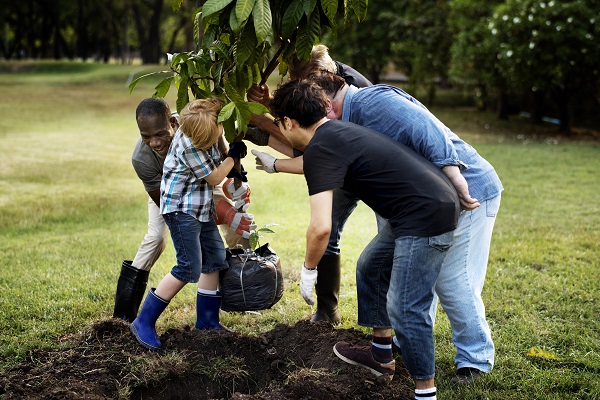 Transplanting both young and mature trees safely is possible. The ease of transplanting a tree depends on the type and size of tree, preparation and proper equipment.
Transplanting both young and mature trees safely is possible. The ease of transplanting a tree depends on the type and size of tree, preparation and proper equipment.
Why Transplant a Tree?
Transplanting trees is a bigger project than moving plants, and it does carry risks. It’s best to have your tree moved by a licensed landscaper, especially larger and mature trees.
There are several reasons for moving a tree, including:
• You prefer another location
• The tree is sickly or just not thriving
• You’re redoing your landscaping
• The mature tree is shading plants that need sun
• You’re building onto your home and want to keep the tree
Young trees, or saplings, are the most frequently transplanted. This is usually because the property owner changes their mind about the location, or the tree appears limp, loses leaves or just doesn’t grow.
Tools for Transplanting Trees
• Shovels with sharp points (moving a tree requires multiple people)
• A post hole digger
• A ten gallon bucket for each tree
• Large containers for big trees
• A yard dolly/cart or large wheelbarrow
The best shovels to get a tree out of the ground without damage feature solid shank construction for strength and longer, narrower blades than a standard pointed irrigation shovel. A post hole digger makes digging a new hole for a young tree a breeze. You’ll need regular sharp-pointed shovels to dig large holes for mature trees.
Preparing to Transplant a Tree
Make sure that you know where utility lines are before doing any extensive digging in your yard.
Moving an established tree requires substantial preparation. Root pruning must be done the season before transplanting the tree. Root pruning should be done by an experienced landscaper. It diminishes transplant shock and is necessary to move mature trees with long-running roots.
Find a location as similar to the original for a mature tree. If you’re transplanting a young tree that isn’t doing well, ask your landscaper about a location with a better ratio of sun and shade and richer or better-draining soil.
Dig the new hole in advance. Depending on the size of the tree, just digging a new hole could take more than a day. It’s possible to move trees up to 50 feet tall, but that requires professional landscaping equipment.
Thoroughly water the tree’s new home the day before transplanting. If the hole is large enough for children or pets to fall into, cover it with a tarp held down by cinder blocks.
Dig around the tree about half a foot from the new root ball formed by root pruning. Any plant should be dug out from underneath, not pulled up by the stem or trunk. Wrap the root ball in burlap for moving the tree to the new location. Water the area again after replanting the tree.
Things to Remember:
• Transplanting trees must be planned in advance
• The right tools will make the job easier
• A landscaper should move a large tree
For the best results in moving your tree, contact us and let us do the job for you.
